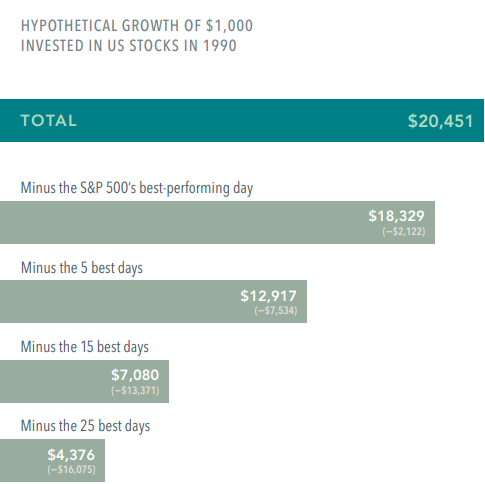The Cost of Trying to Time the Market

The impact of missing just a few of the market’s best days can be profound, as this look at a hypothetical investment in the stocks that make up the S&P 500 Index shows. Staying invested and focused on the long term helps to ensure that you’re in position to capture what the market has to offer.
- A hypothetical $1,000 turns into $20,451 from 1990 through 2020.
- Miss the S&P 500’s five best days and the return dwindles to $12,917. Miss the 25 best days and that’s $4,376.
- There’s no proven way to time the market—targeting the best days or moving to the sidelines to avoid the wors —so history argues for staying put through good times and bad.
Missing only a few days of strong returns can drastically impact overall performance.
Based on the total return of the S&P 500 Index from January 1, 1990, to December 31, 2020. Past performance is no guarantee of future results. Indices are not available for direct investment. Their performance does not reflect the expenses associated with the management of an actual portfolio.
In US dollars. For illustrative purposes. The missed best day(s) examples assume that the hypothetical portfolio fully divested its holdings at the end of the day before the missed best day(s), held cash for the missed best day(s), and reinvested the entire portfolio in the S&P 500 Index at the end of the missed best day(s). Annualized returns for the missed best day(s) were calculated by substituting actual returns for the missed best day(s) with zero. S&P data © 2021 S&P Dow Jones Indices LLC, a division of S&P Global. All rights reserved.
Investing risks include loss of principal and fluctuating value. There is no guarantee an investment strategy will be successful.
